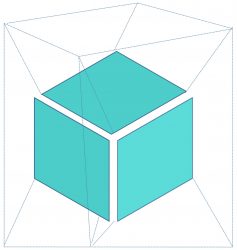For decades our attention has been focused on how learning works. However, at the beginning of 2025 it might be more important to shift our focus of learning research on “not learning”. Recent research on learning includes the study of “social learning” of mice (Winiarski et al. 2025) and the related brain mechanisms that are involved in social learning like the prelimbic cortex.
For our human societies we also rely to a great deal on social learning. In mice, however, the disruption of the prelimbic cortex causes mice to no longer seek “social information related to rewards” from other mice. In Eco-HAB cages these mice follow their scent capabilities to “sort” their information seeking from for example higher “social status animals”. This tested reward seeking behavior allows clues to how learning works. The intervention to disrupt the synaptic plasticity in a later phase of the experiment reveals less social learning from the network social information and fewer contributions to the social network.
Only intact neural plasticity in the prelimbic cortex ensures the maintaining of the social structure. Of course it is highly questionable, whether these results based on animal experiments tell us anything about social structure and social learning in other mammals, but there might be reasons to search for explanations of “no social learning” in humans as well. 

